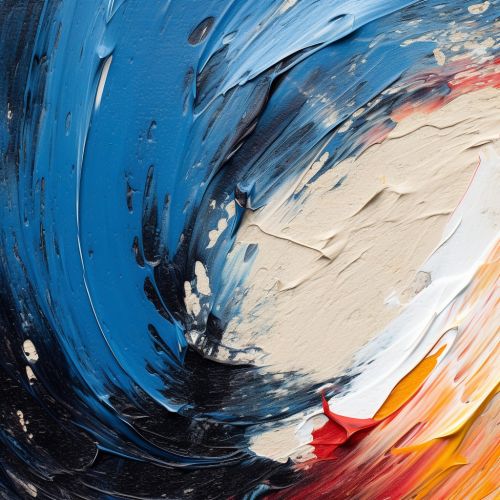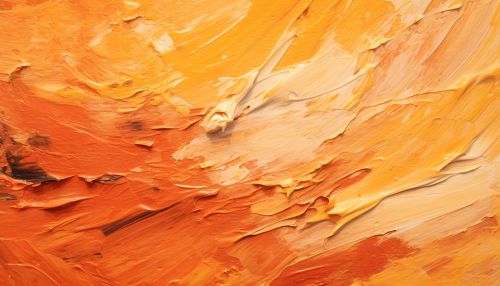Texture (visual arts)
Definition and Overview
In the realm of visual arts, the term 'texture' refers to the perceived surface quality or feel of an artwork. It is one of the seven elements of art, alongside line, shape, form, value, space, and color. Texture can be real or implied, and can greatly enhance the expressiveness and impact of a work of art.
Types of Texture in Visual Arts
There are two main types of texture in visual arts: actual texture and visual (or implied) texture.
Actual Texture


Actual texture is the physical feel an artwork has. This could be the roughness of a brush stroke on a canvas, the smoothness of a marble sculpture, or the softness of a fabric in a textile piece. Actual texture can be manipulated by the artist through the materials they choose and the techniques they use.
Visual Texture
Visual texture, also known as implied texture, is when an artist creates the illusion of texture on a flat surface. This is often seen in two-dimensional artworks such as paintings and drawings. Artists can create visual texture through the use of various techniques and tools, such as hatching, stippling, and the application of different brush strokes.
Role and Importance of Texture in Visual Arts
Texture plays a crucial role in visual arts. It adds depth and dimension to artworks, making them more engaging and appealing to the viewer. Texture can also be used to evoke certain emotions or convey specific ideas. For instance, an artist might use rough textures to express turmoil or distress, while smooth textures could be used to convey calmness or tranquility.
Techniques for Creating Texture
Artists employ a variety of techniques to create texture in their artworks. These techniques can vary greatly depending on the medium and the desired effect.
Painting
In painting, artists can create texture through the application of paint. Thick, heavy brush strokes can create a rough, tactile texture, while thin, smooth strokes can create a flat, smooth texture. Techniques such as impasto, where paint is laid on an area of the surface very thickly, can also be used to create texture.
Sculpture
In sculpture, texture is often created through the manipulation of the material. For instance, a sculptor might carve or chisel a piece of stone to create a rough texture, or polish a piece of metal to create a smooth texture.
Printmaking
In printmaking, texture can be created through the use of different inks and printing techniques. For instance, an artist might use a thick, heavy ink to create a rough texture, or a thin, light ink to create a smooth texture.
Texture in Digital Art
With the advent of digital technology, artists now have a new medium to explore texture. Digital art programs offer a variety of tools and techniques for creating texture, from digital brushes that mimic traditional painting techniques to filters and effects that can create a wide range of textures.
